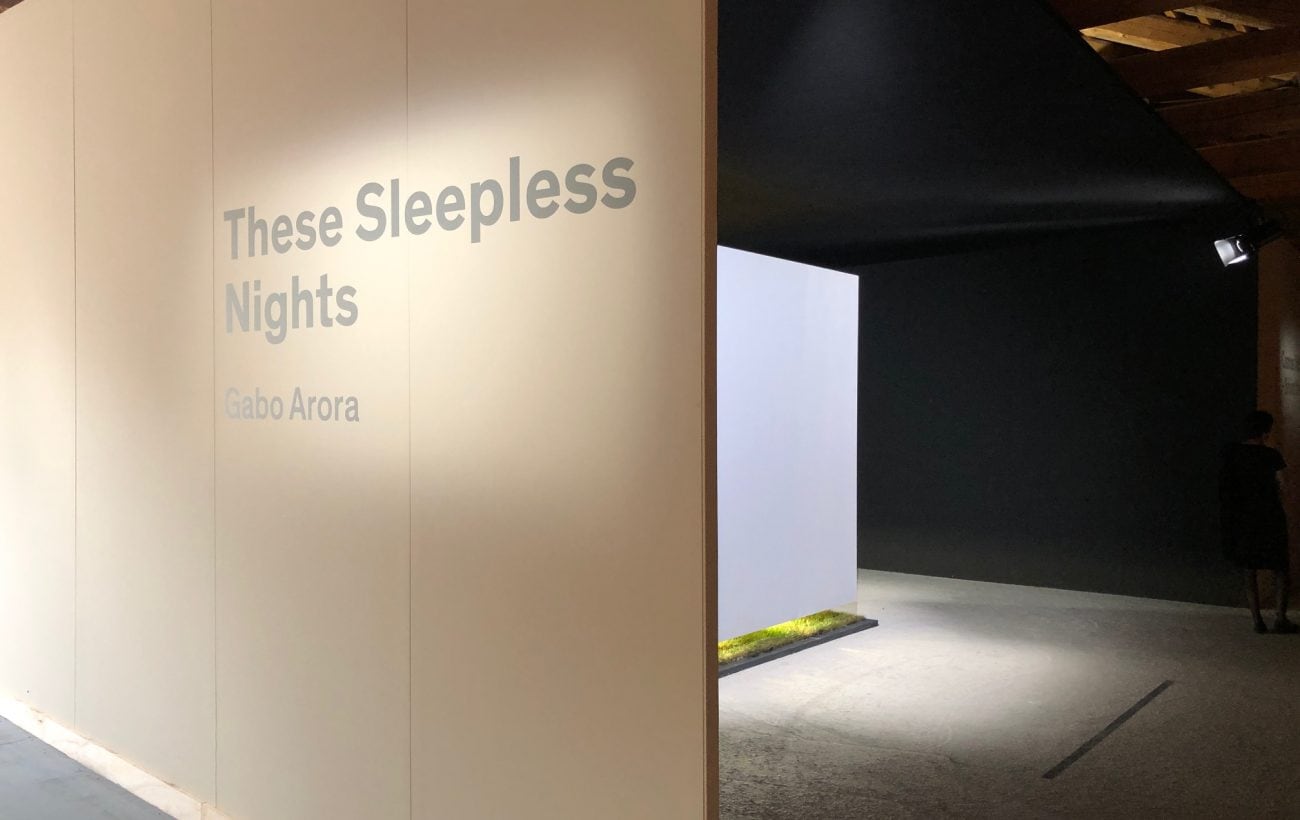The Venice Film Festival could not go amiss without the Magic Leap One making an appearance this year. A good thing, then, as the new augmented reality glasses were featured in two interesting projects to boot—one of which is These Sleepless Nights, a documentation in AR and director Gabo Arora’s latest work.
Four Walls
There I stand, facing an imposing white cube. It glows and looks like it’s hovering, while at its base, grass has started to sprout. Beyond that, however, I see nothing—for now.
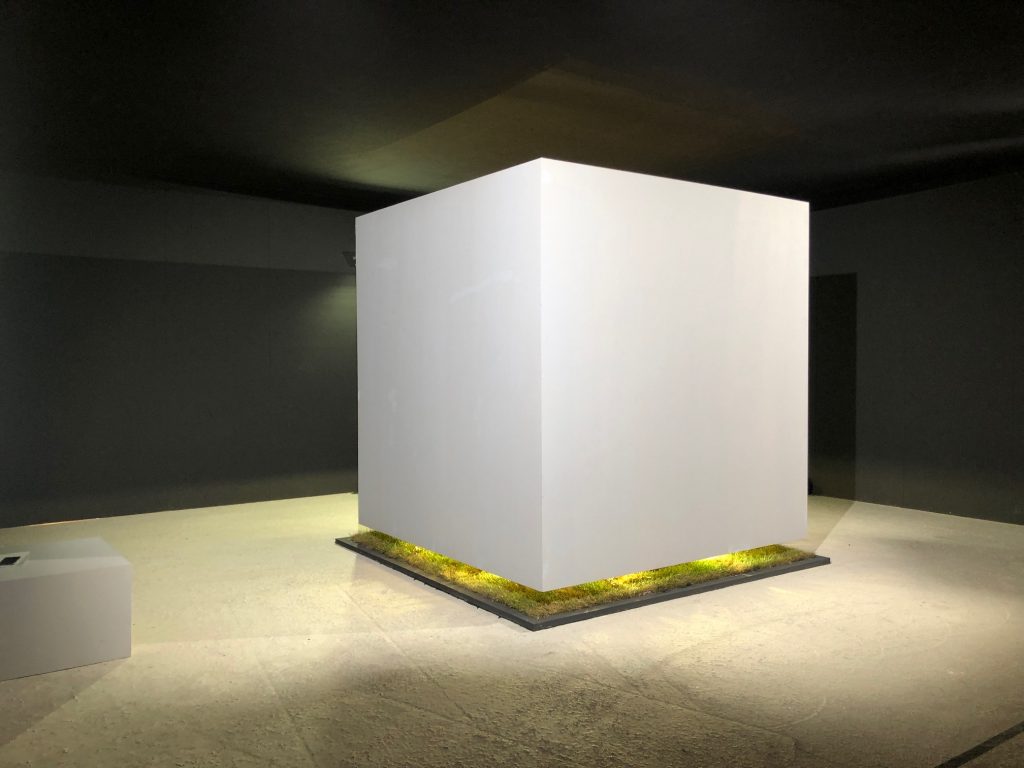
This changes when a festival staff member equips me with a pair of augmented reality glasses, the Magic Leap One. Written characters appear before me, some numbers, and then I am prompted to touch the cube in front of me. Depending on where I place my hand on its surface, a different voice begins to speak.
I start listening. The voices tell of their fates, of letters, personal objects, of home, their homes and their children—children who would soon become homeless. The voices describe how, due to personal or financial reasons, they would wind up in one of the worst situations imaginable in our admittedly wealthy society: eviction.
I have to step around the cube to experience all four chapters of the AR documentation. A clever and almost cynical idea: I am confronted with four walls—(are they mine?)—but from the outside. Each of the walls reveals another chapter with its own type of interaction.

I can choose different faces by looking at them in the second chapter, submerge my hands in a river in the third and stroll through a miniature landscape filled with mountains and valleys in the fourth. All the while, I listen to the voices and their stories in the order of my choosing.
The Focus Lies on Listening
They paint a retrospective of the times leading up to the action for eviction, their court cases, their eventual ousting and the months following those moments. For most, the forced relocation entailed permanent and oftentimes devastating ramifications.
One woman in particular had to temporarily place her children in a foster home upon losing her home. Later, “temporarily” turned into “permanently,” when the kids were adopted by a wealthy white family. Even years later, many of the people behind the voices still face difficulties finding a new home. The word “eviction” becomes a mark in their record that is hard to shed.
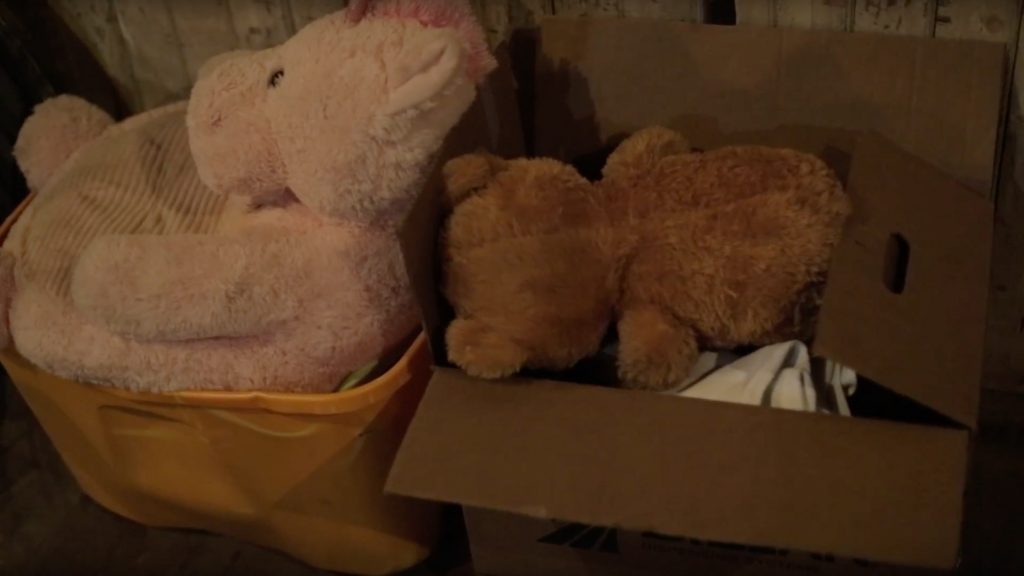
The augmented reality experience concentrates on stories told in spatial audio—the visual component serves as more of a symbolic approximation. Faces are shown only once in an abstracted form—otherwise, the voices remain faceless. Music by star composer Philip Glass accompanies the experience throughout.
The focus on audio was a deliberate decision, as I find out during an interview with director Gabo Arora and sound designer Lauren Hutchinson during the event in Venice. Lauren Hutchinson explains her approach to me:
It was about getting real people to really share their stories with you. When you do that in audio, you’re going there just with a microphone, without a camera. And so you get people to really comfortably open up to you. We made sure we did it in spaces that they were choosing, where they felt most comfortable in. I think that’s really how we got that deep kind of emotion coming across.
In These Sleepless Nights, visitors are encouraged time and again to close their eyes and concentrate fully on the spoken word. Here, people are to listen to each other again. Gabo Arora comments this as follows:
It’s an art project and it’s a documentary— it’s documentary art. Every voice in there is real and extraordinary. And I think, the technology augments how extraordinary they are. This is why it’s augmented reality. You just are able to be more attentive.
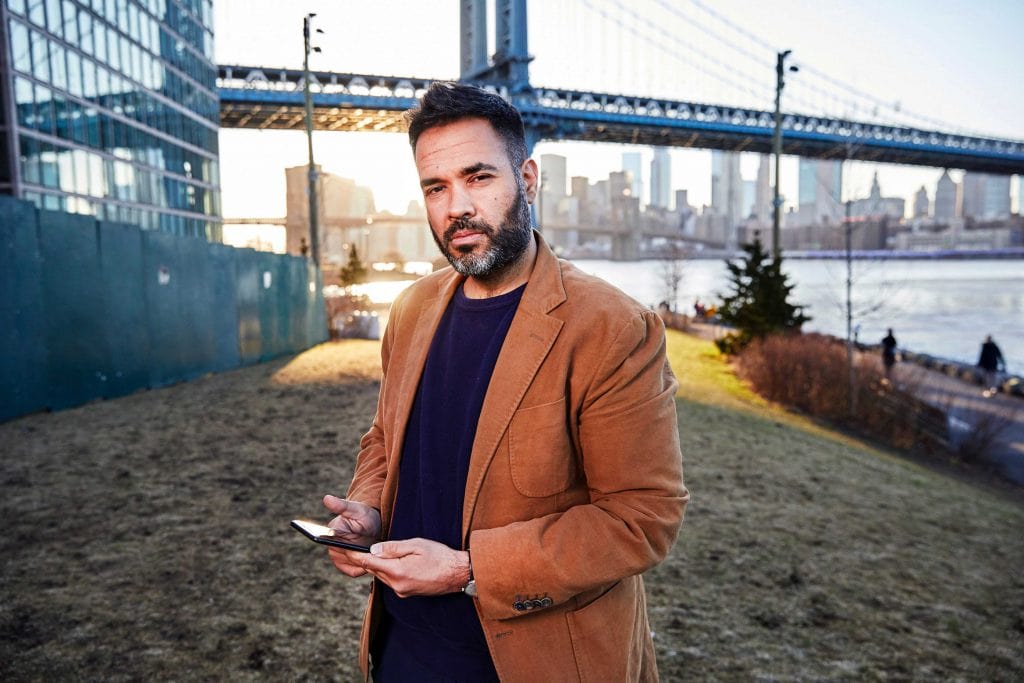
Gabo Aroras personal connection to the project seems to be a predominantly societal one. He, who hails from an immigrant family himself, still believes in the American dream, he tells me. According to Arora, the US rewards people for being the best at something—more so than any other place in the world. However, the country has become veritably obsessed with success. While the American dream holds out for some, it has become unreachable for many, Gabo Arora stresses also in his director’s statement.
These Sleepless Nights Addresses the US Housing Crisis
The AR audio world of These Sleepless Nights kicks off abruptly and with few explanations. Not being American—or more pertinently, being German—the project initially feels a bit difficult to grasp. For in the renters‘ state of Germany, tenants are much better protected than in many other countries around the globe, including the US.
And yet, mounting rents, scarce accommodation and scant spending on social housing have driven up the pressure around these parts, too. The amount of homeless and displaced persons has increased here, oftentimes as a direct consequence of actions for eviction and rental arrears. Those already living in a socially weaker position are hit especially hard by such misfortune.
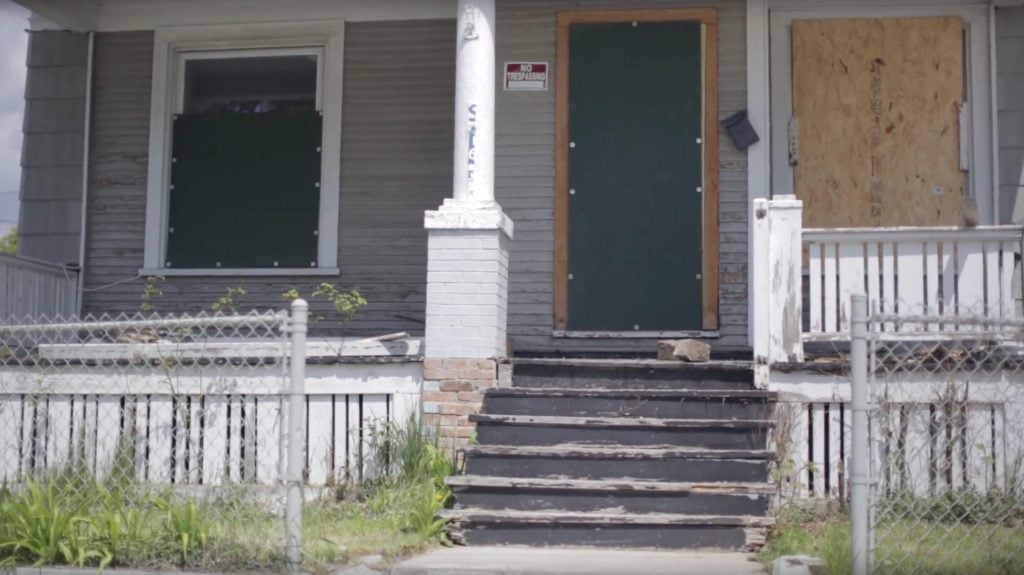
Unlike in Great Britain, for example, Germany does not survey the number of homeless and displaced persons—any statistics base on estimations. Data on actions for eviction is also few and far between, in Europe as well as in the US.
This is why the Eviction Lab, which is part of highly acclaimed Princeton University, has devoted itself to the statistical evaluation of evictions. The lab has recorded all court-ordered evictions that took place in the US between the years 2000 and 2016. These Sleepless Nights conveys these numbers, among others. The Eviction Lab was founded by the sociologist Matthew Desmond, who leads the scientific team.
Evicted
In 2016, Desmond published Evicted, a book that was later awarded the Pulitzer prize among others. The AR experience These Sleepless Nights is inspired by this book.
Just like the book, the AR experience mainly accompanies tenants who live in Milwaukee, Wisconsin. Frequently, evictions threaten poor families with children, Desmond writes in his book, and among those, they disproportionately affect women of color and their children. These are also the people we run into in These Sleepless Nights. And, just like in the book, the AR experience also lets landlords, court judges and court marshals speak their piece. This paints a vivid and disturbing picture of the US housing crisis.
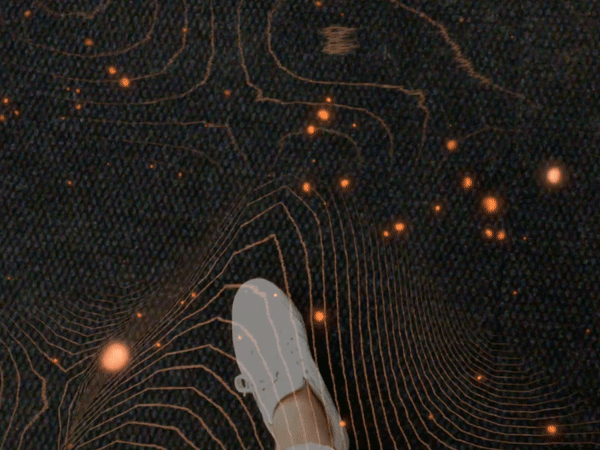
Lauren Hutchinson explains their decision to show both sides in the AR experience:
I tried to edit it in a way that was giving everyone kind of an equal voice when they were speaking. Not to create villains in this situation, but understand how we’re getting to this complex point where people are being treated so terribly. These people are involved in this—they’re kind of justifying it to themselves how it’s happening. We were trying to understand that better because you’re not going to move forward if you simply say: ‘This is a situation with evil people and good people.’ Everyone is involved in this on all kinds of layers. So I think audio is really good way for doing that.
The Next Amendment Argues for Housing First
It seems that Edward Saatchi simply couldn’t stand by and watch the situation as it unfolds. Alongside his work as executive producer and co-founder of Fable, the studio behind the VR film Wolves in the Walls, he called into life the initiative The Next Amendment. Saatchi himself comes from San Francisco, California—one of the states most severely affected by the housing crisis in the US.
The initiative calls for an amendment to be made to the constitution. The right to a roof above one’s head should be passed into law. Edward Saatchi is not concerned with affordable housing for all, but much rather with a humane minimum of protection, for example in the form of temporary mini shelters. The idea revolves around “just shelter,” he writes on VR Focus, referencing the eponymous activist platform likewise founded by Desmond.
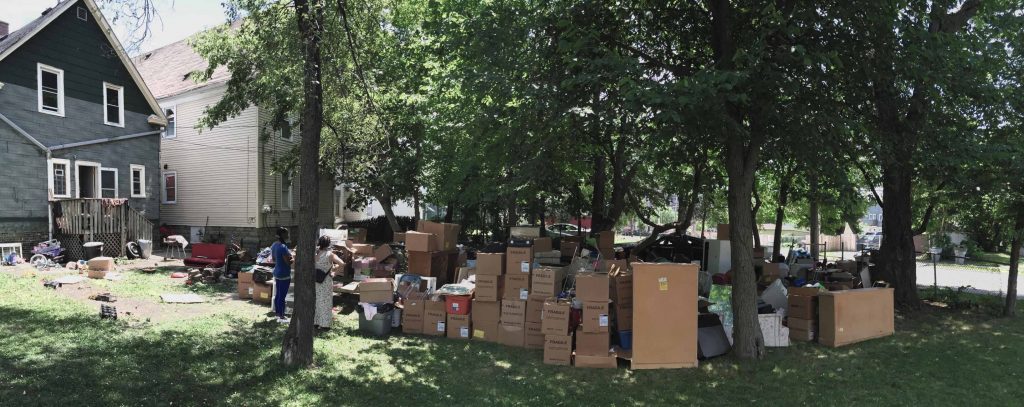
In light of this, The Next Amendment is closely related to the concept of Housing First. Housing First advocates for homeless or displaced people to be given shelter above all—free of any conditions or requirements. Issues such as drug addiction, debt, or unemployment can be tackled later, once the roof above one’s head has provided some the stability that is so direly needed. Shelter, then, is not understood as a reward, but as a basic requirement.
Advocates for the Housing First approach want to overcome the endless spiral of emergency shelters and collective accommodations. In fact, a steadily increasing number of states and cities has begun experimenting with Housing First—Berlin, too, is pursuing a pilot scheme. The Next Amendment aims to collect a million dollars for Housing First projects in the US, and These Sleepless Nights is meant to aid in that pursuit.
The Campaign in These Sleepless Nights
The AR project was commissioned by The Next Amendment, with Edward Saatchi himself acting as executive producer. Production partners were LightShed, Dpt. and others. Magic Leap also contributed financially to the prototyping, Gabo Arora tells me. During the project, he and his team were granted full artistic freedom.
Following the premiere, installations are to take place in various US cities (San Francisco, Milwaukee and Washington, DC) where passersby will be able to explore the metal cubes from the outside and dive into the AR experience on the spot via an app on their iPhones.
Further, the app will integrate a direct means to donate to the cause. Saatchi calls this type of public art for a good cause AgitARt. In addition, These Sleepless Nights will be shown in galleries and museums, according to Gabo Arora in Venice.
Directed at the US audience
The political demands and the strong connection to the book Evicted explain why These Sleepless Nights is directed at the US audience first and foremost. However, when I contemplate the AR project as such, I think it would have benefitted greatly from clearer directions, more embedding, more explanations, maybe even a more global approach as the problem itself affects most anywhere in the world.
While the interactive scenes helped me find my orientation, I found myself wishing for more graphic visualizations to fully grasp the experience on an emotional level. At times, I had difficulties placing the voices—I really had to concentrate on listening to the stories. The original recordings are touching, viscerally vulnerable, and the stories harrowing—yet for non-native English speakers, they are often also very hard to understand.
In the end, it was a mother’s story that I just could not forget. She had wanted to get a Christmas tree for her son, no matter what—even though she could not say with certainty that they would be living in this house come Christmas Eve. Through her, those sleepless nights assumed a vivid and deeply authentic voice.
This article was published first on No Proscenium.
Read more:
Terminal 3, an AR project on the Hololens, also criticizes the politics of the US. I had the chance to see it at the Tribeca Film Festival in 2018 and was very impressed.
At the same festival, I also witnessed director Gabo Arora’s last work, The Day The World Changed. You can find more about both projects in this article.
Translated by Jan Mc Greal

